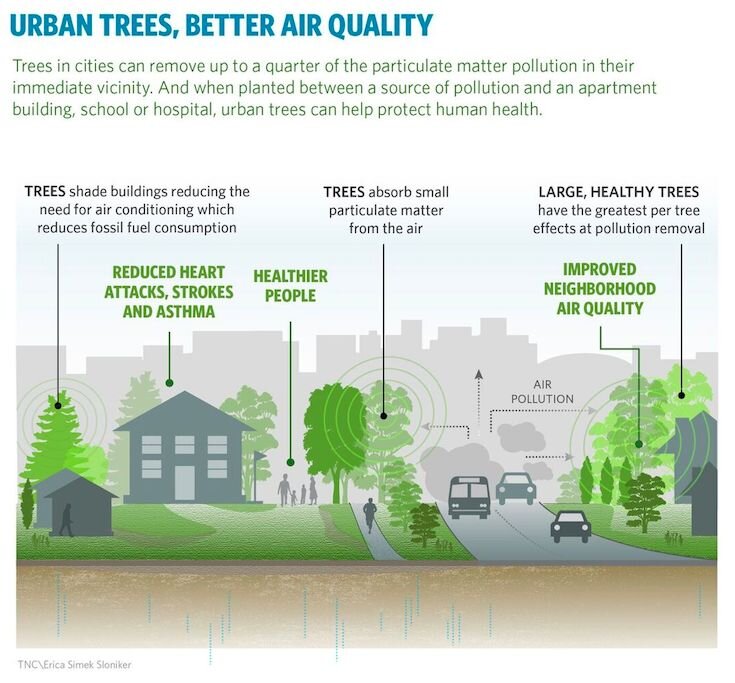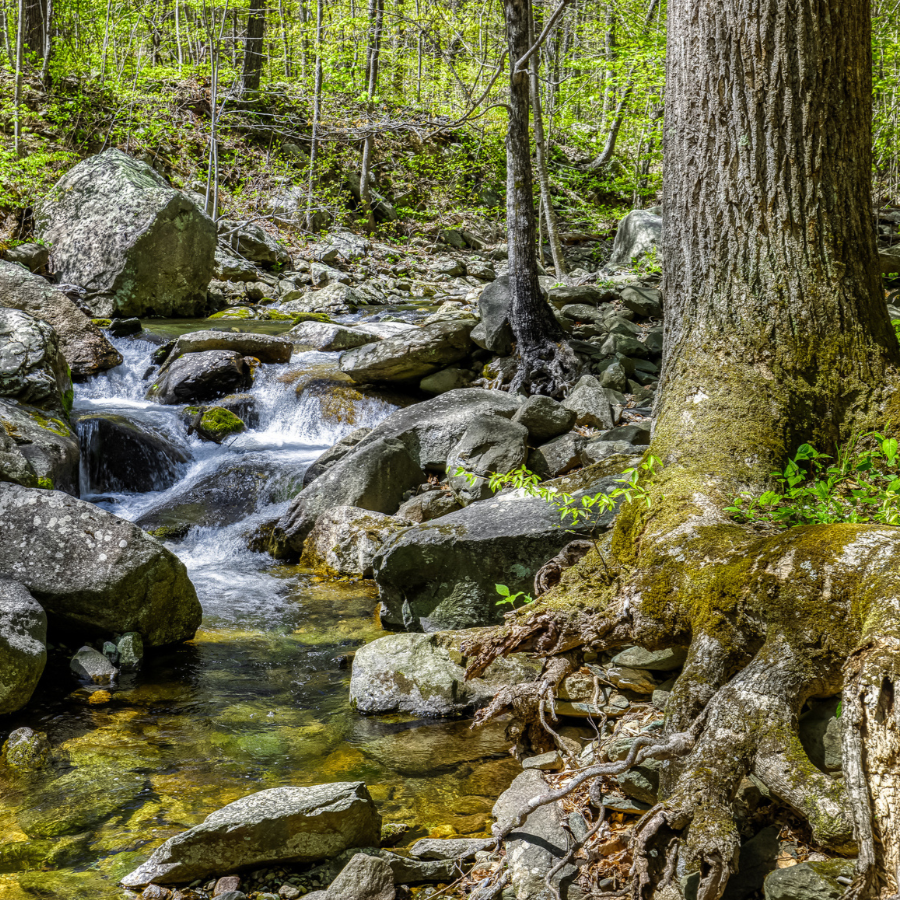7 tree-mendous facts: How trees support the Potomac River, us, and each other
/And how they’re becoming an invaluable part of local climate action
VOlunteers at a Potomac Conservancy community tree planting. Image CopyRight WILLiam MACFARLAND, MACFARLANDPHOTO.NET
Believe it or not, we are lucky to be alive in 2021. Why? It is a time when policy-makers and scientists finally understand the power and magic of trees - and boy, are they more special than we ever could have imagined.
A few decades ago, the dominating theory in forestry was that trees competed with each other and therefore you had to cut many down to allow others to grow. Brutal, right? It’s also dead wrong.
“The more stressful the environment, the more likely you are to see plants working together to ensure mutual survival.”
In other words, trees, just like us, depend on each other and community to survive the tough times.
Want to know how they do it? Their other amazing abilities? How they support clean water and our climate? How we can support them? Read on!
1. Trees know sharing is caring
Trees share with each other, other plants, and, most importantly, fungi!
Mychorrizal fungi grow cobweb-like networks underground that connect to tree roots. Together, they form a symbiotic, mutualistic relationship - the fungi deliver phosphorous to the trees and the trees deliver carbon to the fungi in return.
By connecting to tree roots, the fungi also connect to trees to each other. This “wood-wide web” allows trees to share water, sugars, and nutrients throughout forests.
And it’s not just trees. Over 80% of terrestrial plants have roots that grow symbiotically with mycorrhizae in a critical, ancient relationship that has formed over hundreds of millions of years.
2. Trees also use “technology” to communicate
The value of the “wood-wide web” goes far beyond a simple exchange of goods and services.
Through this network, trees can send each other warnings. If an individual tree is being attacked by an insect infestation, it can send out alarm chemicals that alert other trees on the network to raise their defensive responses before the insects reach them.
Bugs chewing on plants leaves can also prompt trees to release airborne warning signals that can be detected by their neighbors. Again, this gives the tree community time to raise chemical defenses against attack.
Just like humans in a pandemic, tree communities rely on a functioning networks and signals sent through the air to stay in touch and survive in a crisis.
3. Trees, animals, and other plants work together to create “islands of fertility”
Not every plant in the forest has the same role to play, but everyone benefits when they all play to their strengths.
Picture a barren landscape…One pioneering tree may take root in a difficult environment and create a calm, protected area where new seedlings can grow. As those seedlings grow, they’ll reach different parts of the canopy. Taller trees will have more sunlight access, but will also be able to shelter younger or shorter individuals.
Some trees will root deep into the soil and be able to pump up nutrients that shallower plants can’t reach. As its leaves and branches fall, these nutrients will feed the organisms on the forest floor. Fallen leaves and pine needles will form a sponge that keeps water available during hot and dry days. In time, all manner of animals will come to live and feed in the forest and spread the nutrients and seeds further afield.
In this way, each plant and animal has a specialized part to play and supports the community as a whole.
4. Just one tree can increase local biodiversity 80 fold!
Image courtesy of gary bendig/unsplash
You don’t need to live in a dense forest to see trees work their magic.
While working on a method to estimate biodiversity (the amount of species in a given area) in “in-between” areas (places that are not dense forests or barren wastelands - aka where most of us live), Stanford University scientists found they could do so by looking at the amount of tree cover in the area. And the results of their study are astounding.
The data showed that adding just one native tree to a pasture could increase the number of bird species in a 70-meter radius from nearly zero to 80! In fact, they found that with more native tree cover, species of bats, non-flying mammals, plants, and birds all increased significantly in number.
Better yet, as tree cover approaches 100% in a given area, endangered and at-risk species (like big cats and “deep forest birds”) start to return!
“All the animals agreed: trees are great”
5. They help us breathe… and not in the way you’re thinking of…
Yes, trees are a major source of the oxygen we breathe (we wouldn’t be doing our job as a water protection organization if we didn’t point out that 50% of all oxygen in the air comes from phytoplankton in water). But did you know that, even without producing oxygen, trees are vital to our lungs and survival?
3 million people worldwide die annually of diseases linked to air pollution. In Washington, DC, 1 in 6 residents have asthma — 50% higher than the national average. Rates are even higher in historically Black, lower-income parts of the city where, as you might have guessed, tree cover is lower.
The good news is, trees are a cheap and easy way to save lives.
According to a 2016 Nature Conservancy study analyzing the health benefits of trees in 245 cities, “investing just $4 per resident in each city that investing just US$4 per resident in each of these cities in tree planting efforts could improve the health of millions of people, and that trees are as cost-effective as many other common solutions.”
Image courtesy of the nature conservancy
6. They keep us cool and calm
Ready for more ways trees are literally saving our lives!
Heatwaves are the deadliest weather-related event worldwide and global heating is making more people vulnerable. City residents are particularly at risk due to the “urban heat island effect” which occurs when natural land cover is replaced with impermeable surfaces (pavement, buildings, etc.).
Our elderly, sick, and unhoused populations are, once again, the most vulnerable.
Luckily, as the Nature Conservancy report points out, “City planners can even target plantings to protect areas with especially vulnerable populations—such as near schools and hospitals—or use trees as a screen against PM [particulate matter] coming from highways and industrial areas.”
So how do they do it? Trees provide shade, which blocks the suns rays from being absorbed by surfaces like roads, parking lots, and rooftops. They also cool the air by transpiring water. Urban trees can cool a neighborhood by 4°F!
Bonus fact! 🌳 Trees also keep us cool by reducing stress levels. Research has shown that exposure to chemicals released by trees known as phytoncides can result in reduced blood pressure, reduced anxiety, increased pain threshold and even increased expression of anti-cancer proteins.
7. You can support trees - and fight climate change - right now!
Our favorite fact of all! (And it only takes a minute).
More and more elected leaders are recognizing the cost-effective power of trees for benefitting community health, filtering pollution out of our drinking water, and capturing carbon.
Now you can tell Congress we want them to put trees to work at the national scale.
The Climate Stewardship Act will plant millions of trees nationwide in vulnerable urban neighborhoods, plant billions of trees to restore large forested, and create jobs. In doing so, it will slow the advance of the climate crisis and help protect people and wildlife from its worst effects.

















